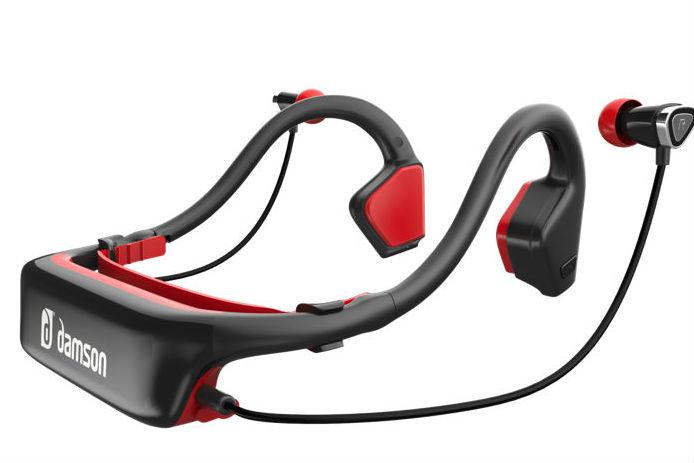
The audio engineers at Damson aren’t afraid to play around with new technology. The last piece we reviewed from Damson, the Twist, was a small Bluetooth speaker that used Navy-patented tech called Incisor Diffusion to vibrate surfaces, essentially turning flat surfaces into speakers for better bass response. For its new Kickstarter project, Headbones, Damson is again employing vibration technology, only this time it’s your skull — not a table — that makes the system work.
Bone conduction technology, the engine that powers Headbones, isn’t new. There are several products on the market that utilize bone conduction, which employs vibrating pads to effectively turn a bone in your skull into a sort of transducer, transmitting the sound directly to the inner ear. The idea is to bypass the ear canal completely so the user can jam out, yet remain aurally alert when, say, riding a bicycle through traffic.
However, while bone conduction is very useful for specific circumstances, a lack of rich, full sound performance makes most headsets that utilize the technology one-trick ponies. Not so with the Headbones, which add the option of removable noise-canceling ear buds to the equation for dual ways to rock out.
Granted, the Headbones look a bit of a monstrosity with everything connected, but the full monty divulges a whole lot of tech packed into an incredibly mobile frame. The system aims to be a one-stop shop for music on the go, whether you’re soaring across the pond, or biking to the local coffee shop. And best of all, the early bird Kickstarter pledge (still available at the time of publishing) nets you a pair of Headbones at a reasonable $144.
Features for the Headbones include wireless audio transmission from up to two music sources via Bluetooth, a claimed 10 hours of battery life, flexible arms and an adjustable strap to meld the halo to your noggin, on-board control for play/pause and hands-free calling, and IPX5-rated water resistance.
Of course, the biggest question on our minds centers (as usual) around audio performance. We try to be optimistic, but this being the first pair of headphones we’ve seen from Damson, we have to wonder if this is an overly ambitious effort. We’ll have to wait for our own pair of Headbones before we’re convinced the product can perform up to snuff. And frankly, we’re also a bit unsure folks will be down to sport them in public, as opposed to while cruising on a bike.
With that said, you can back the Headbones at Kickstarter today. Presently, Damson has 24 days to raise the final $25,000 or so of the original $68,000 goal.


